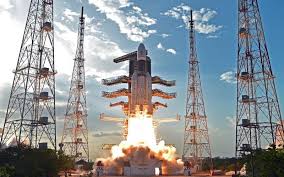NVS-01 Satellite
The Indian Space Research Organisation (ISRO) is gearing up for the launch of the NVS-01 satellite, a significant step towards bolstering India’s navigation capabilities.
NVS-01: The Navigation Satellite on the Horizon
- Navigation Satellite-01, or NVS-01, is an advanced satellite that is scheduled for launch on May 29.
- It is designed to replace the IRNSS-1G satellite that was launched in 2016.
- With a mission life of 12 years, the NVS-01 satellite aims to enhance the existing navigation infrastructure by incorporating advanced technologies and capabilities.
Understanding the IRNSS Space Segment
The IRNSS space segment comprises a constellation of seven satellites. These satellites, namely IRNSS-1A, 1B, 1C, 1D, 1E, 1F, and 1G, were launched between July 2013 and March 2016. The NVS-01 satellite will take the place of IRNSS-1G, contributing to the ongoing development of India’s navigation system.
NavIC: India’s Regional Navigation Satellite System
ISRO has established the Navigation with Indian Constellation (NavIC), formerly known as the Indian Regional Navigation Satellite System (IRNSS). NavIC consists of a network of seven satellites strategically placed to provide positioning, navigation, and timing services.
The Role of the NavIC Constellation
The NavIC constellation consists of three satellites positioned in geostationary orbit and four satellites in inclined geosynchronous orbit. This arrangement ensures continuous and reliable coverage of the Indian subcontinent and its surrounding regions.
Services Offered by NavIC
NavIC offers two essential services: the Standard Position Service (SPS) and the Restricted Service (RS). The SPS is available to civilian users, while the RS is exclusively provided to strategic users. These services operate in both the L5 (1176.45 MHz) and S-band (2498.028 MHz).
Expanding Coverage Area and Accuracy
NavIC’s coverage area encompasses India and extends up to 1,500km beyond its borders. The satellite system is designed to provide exceptional positioning accuracy, better than 20 meters, and timing accuracy better than 50 nanoseconds. Such precision opens up opportunities for diverse sectors, including transportation, disaster management, and agriculture.
Month: Current Affairs - May, 2023
Category: Science & Technology Current Affairs







